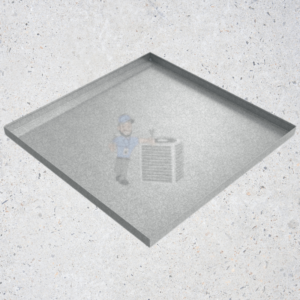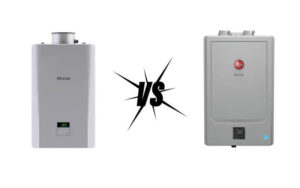HVAC systems are crucial for maintaining indoor comfort throughout the year, but behind their efficient operation lies a component often overlooked: the HVAC drain pan. This essential part significantly ensures your system runs smoothly by managing condensation and preventing water damage. This comprehensive guide delves into everything you need to know about HVAC drain pans, from their function and types to maintenance tips and joint issues.
What is an HVAC Drain Pan?

An HVAC drain pan is a shallow reservoir located beneath the indoor cooling coil or evaporator coil of your air conditioning unit. Its primary function is to collect condensate—a natural byproduct of the cooling process—as it drips off the coil. Without a drain pan, this condensation could lead to water damage, mold growth, and other issues within your home.
Types of HVAC Drain Pans
- Primary Drain Pans: These are directly beneath the evaporator coil and collect most condensate during regular operation.
- Secondary (or Auxiliary) Drain Pans: Positioned underneath the primary pan, these serve as a backup in case the primary pan overflows or develops a leak. They help prevent water damage by redirecting excess condensate away from your home’s interior.
- Galvanized Steel vs. Plastic Drain Pans: Traditionally, drain pans were made from galvanized steel, which is known for its durability. However, modern units often feature plastic pans, which are lightweight, rust-resistant, and easier to install.
Importance of Regular Maintenance
Maintaining your HVAC drain pan is crucial to ensure efficient operation and prevent water-related damage. Here are some essential maintenance tips:
- Inspect Regularly: Check your drain pan periodically for signs of standing water, rust, or algae growth.
- Clean Thoroughly: Remove any debris, sediment, or algae buildup from the pan to prevent clogs and microbial growth.
- Clear Drain Lines: Ensure that the drain lines connected to the pan are clear of obstructions, such as dirt or mold, which can impede water flow and cause backups.
Common Issues with HVAC Drain Pans
- Overflow: If the drain pan becomes clogged or the drain line is blocked, condensate can overflow, leading to water damage and potential mold growth.
- Corrosion: Galvanized steel pans may rust over time, especially in humid environments, compromising their effectiveness and lifespan.
- Microbial Growth: Standing water or debris in the pan can create an ideal environment for mold and bacteria, impacting indoor air quality.
Solutions and Repairs
- Unclogging Drain Lines: Use a wet/dry vacuum or a specialized brush to remove debris from drain lines.
- Replacing Damaged Pans: If your drain pan shows signs of rust or corrosion, consider replacing it with a new, durable plastic pan.
- Adding Algae Tablets: Placing algae tablets in the pan can prevent microbial growth and keep your drain system clean.
Conclusion
Understanding the importance of HVAC drain pans and their maintenance is essential for ensuring the longevity and efficiency of your heating and cooling systems. By regularly inspecting, cleaning, and maintaining your drain pan, you can prevent costly water damage and ensure your home remains comfortable year-round.
In conclusion, HVAC drain pans are a vital yet often overlooked component of residential heating and cooling systems. By understanding their function, types, and maintenance requirements, homeowners can ensure efficient operation and avoid potential issues such as water damage and mold growth. For more information on HVAC systems and maintenance tips, feel free to contact us.




















